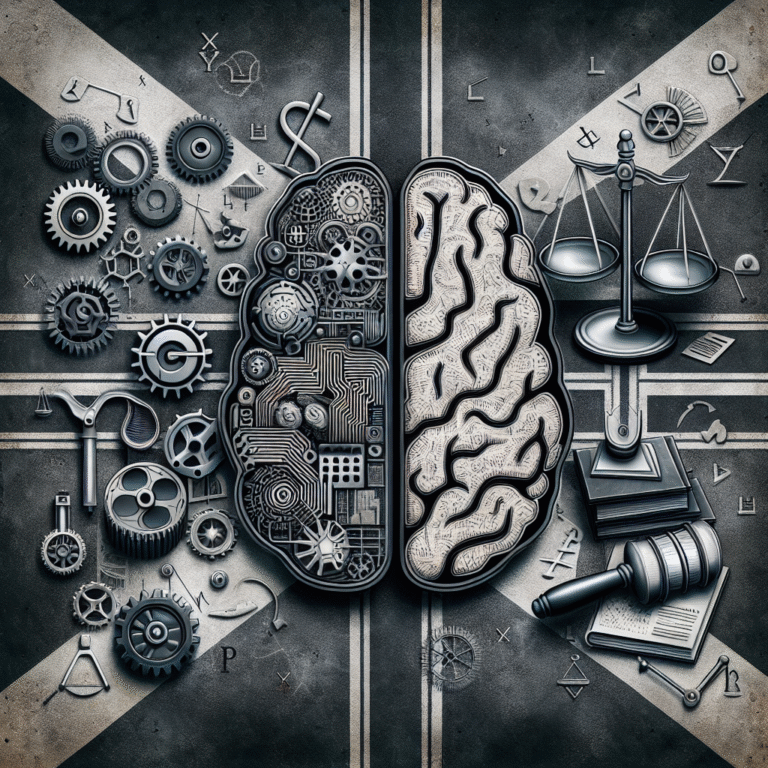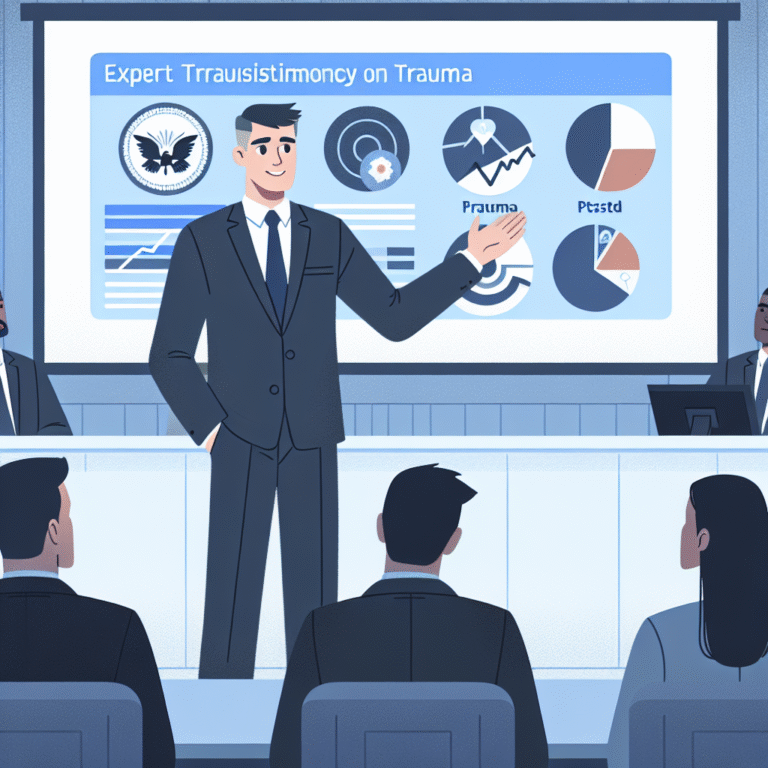
The legal world can often feel like a complex labyrinth, filled with terms and concepts that seem intimidating. Among these, "insanity defense" stands out as one of the most debated and misunderstood. Understanding the Insanity Defense: A Legal Lifeline or a Controversial Excuse? isn’t just a question of law; it’s a question of ethics, morality, and human psychology.
The insanity defense has stirred intense discussions for decades, with high-profile cases bringing it into the public spotlight. Is it a legitimate legal strategy aimed at protecting those who genuinely cannot discern right from wrong? Or is it merely a loophole that allows defendants to evade accountability for their actions?
Introduction
Imagine a person committing a crime so horrific it shakes an entire community. Yet, as the trial unfolds, evidence reveals that the perpetrator was suffering from severe mental illness. Should this individual be held to the same legal standards as a “normal” person? Understanding the Insanity Defense: A Legal Lifeline or a Controversial Excuse? forces us to consider the intersections of mental health and the law, raising questions about justice, empathy, and societal responsibility.
A Framework for Understanding
Before delving deeper, it’s essential to grasp the basics of the insanity defense. In its simplest form, this defense asserts that a defendant was unable to understand the nature of their actions due to a severe mental disorder.
The Legal Basis of the Insanity Defense
The definition and applicability of the insanity defense can vary significantly between jurisdictions. In the United States, several tests are commonly used to determine insanity, including:
-
The M’Naghten Rule: This rule focuses on whether the defendant could understand the nature of the act or distinguish right from wrong.
-
The Irresistible Impulse Test: This test evaluates whether the defendant could control their actions at the time of the crime, despite their understanding of right and wrong.
- The Durham Rule: Though less common today, this test stipulates that a defendant is not responsible if their act was a product of mental illness.
These frameworks not only lay the groundwork for understanding the insanity defense but also highlight its legal complexities.
Historical Context
To fully appreciate the debate surrounding the insanity defense, we must journey through its historical evolution. The notion that mental illness could impair judgment and moral responsibility has existed since ancient times.
-
Ancient Roots: Philosophers like Aristotle contemplated the mental state in relation to moral responsibility, suggesting that true criminal intent requires rationality.
-
Legal Evolution: The first significant legal recognition of the insanity defense in the U.S. emerged from the M’Naghten case in the 19th century, establishing a foundation still cited today.
- Modern Adjustments: Over the years, various high-profile cases such as the assassination of President Reagan have rekindled debates, pushing for reforms and clearer definitions.
Case Study: The Trial of John Hinckley Jr.
In 1981, John Hinckley attempted to assassinate President Ronald Reagan, claiming he did so to impress actress Jodie Foster. His trial became a landmark for the insanity defense. The jury found him not guilty by reason of insanity, leading to public outrage and widespread calls for reform.
Relevance: Hinckley’s case underscored the societal concerns about the application of the insanity defense, prompting changes in how various states approached mental health in criminal justice.
Understanding Public Perception
Public sentiment regarding the insanity defense is polarized. On one hand, advocates argue for humane treatment of those suffering from mental illness. On the other hand, critics argue that it undermines the integrity of the legal system.
The Media’s Role
Media portrayals often shape public perceptions:
-
Portrayals in Films and Shows: Notable films like "A Beautiful Mind" have brought awareness to mental health, while others can sensationalize the insanity defense as a mere plot twist.
- Reporting Bias: Headlines can often exaggerate the implications of an insanity plea, leading to societal misconceptions about its frequency and effectiveness.
Ethical Considerations
When examining the insanity defense, ethical dilemmas arise. Are we exploring a compassionate legal avenue or enabling potential manipulative behavior?
Compassion vs. Accountability
-
Compassionate Views: Many argue that treating mental illness is preferable to punishment, advocating for rehabilitation over incarceration.
- Accountability: Others assert that allowing individuals to escape punishment undermines crime victims and societal safety.
The Controversial Excuse Debate
The phrase “controversial excuse” often surfaces when discussing the insanity defense. But is it truly an excuse?
Misinterpretations of the Insanity Defense
-
Common Misconception: Many believe that evidence of insanity guarantees acquittal.
- The Burden of Proof: In most jurisdictions, defendants must provide substantial evidence of their mental condition, which can be a challenging, resource-intensive process.
Case Study: Andrea Yates
In a tragic case in 2001, Andrea Yates drowned her five children in a bathtub, claiming she was compelled by delusions stemming from postpartum psychosis. Her initial conviction sparked public outrage and debate about mental illness in criminal proceedings.
Relevance: Yates’ case highlighted the complexities within the insanity defense, especially regarding how mental health conditions, often overlooked, can lead to catastrophic outcomes.
Current Trends and Reforms
The ongoing dialogue surrounding the insanity defense has led to recent reforms aimed at balancing understanding with accountability.
-
Legislative Changes: Some states have altered their standards, making it more challenging to succeed in insanity defenses in hopes of restoring public confidence in the justice system.
- Restorative Justice: A trend towards integrating mental health resources and programs in the criminal justice system aims to address root causes of criminal behavior rather than merely punitive measures.
Seeking a Middle Ground
To navigate the complex waters of mental illness and criminality, society seeks a middle ground between justice and empathy.
Recommendations for Reform
-
Increased Mental Health Awareness: Implementing educational programs for judges, juries, and law enforcement can reduce stigmas and promote understanding.
-
Comprehensive Mental Health Evaluations: Before trials, thorough assessments should be mandatory, ensuring that defendants receive fair treatment based on their mental state.
- Investment in Public Health Initiatives: By addressing mental health issues before they escalate, society can aim to reduce crime rates linked to untreated conditions.
Conclusion
Understanding the Insanity Defense: A Legal Lifeline or a Controversial Excuse? prompts crucial conversations that are fundamentally human. Mental health issues challenge our societal perceptions of justice and accountability.
While the insanity defense serves as a protective legal mechanism for individuals with genuine mental health issues, it also raises questions of ethical responsibility and social justice. Ultimately, society must strike a balance between empathy for the mentally ill and accountability for criminal behavior.
In this rapidly changing world, ongoing education and open dialogue about mental health are imperative. By fostering understanding, we can navigate the competing interests of justice and compassion, ultimately leading to a more equitable society.
FAQs
1. What qualifies as a mental illness for the insanity defense?
The definition varies, but generally, significant disorders such as schizophrenia or severe mood disorders qualify if they impede understanding of one’s actions.
2. How often is the insanity defense used?
Statistically, the insanity defense is invoked in less than 1% of criminal cases, and it is only successful a fraction of the time.
3. Can someone found not guilty by reason of insanity still serve time?
Yes, defendants may be committed to mental health facilities for treatment, which could last longer than a prison sentence.
4. Is the public’s perception of the insanity defense always negative?
Not necessarily; while there is skepticism, awareness and empathy for mental health issues have been increasing in society.
5. Are there alternatives to the insanity defense?
Yes, some jurisdictions offer alternative pleas like guilty but mentally ill, which allow for treatment while still holding individuals accountable.
In weaving together these insights, we aim to establish an informed dialogue around "Understanding the Insanity Defense: A Legal Lifeline or a Controversial Excuse?". Society must engage in transparent discussions about the intersection of justice and mental health, steering future reforms toward a fairer and more compassionate legal system.
















